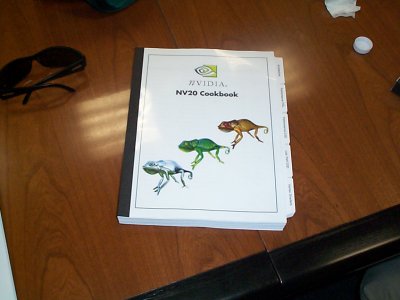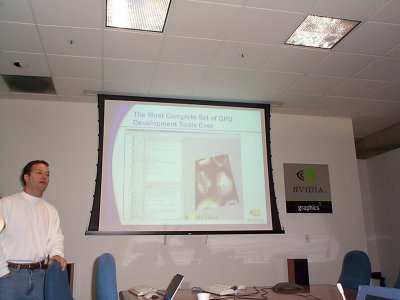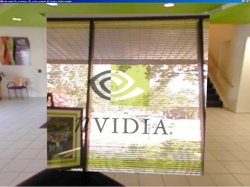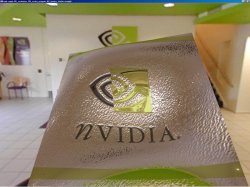 |
|
|
|
In the Forums... |
Posted: February 27, 2001 Written by: Dan "Tweak Monkey" Kennedy Read more about the nfiniteFX engine in our programmable pixel/vertex shaders article Improving 2D Okay, so the 2D core is basically unchanged. What about the problems that the GeForce 2 suffered from at high resolutions? Nvidia explained the problem. The GF2 had a killer 2D core. It had a 350 MHz RAMDAC, which should have kept almost everyone happy. It should have looked awesome with 2D, and in fact, many cards did. In fact, I have a few GF2 reference cards here and they look great with 2D at 1600x1200x32bpp @ 75hz. The problem isn't Nvidia's fault (really!) -- it's the RAMDAC filter that OEMs slapped on their GF2 cards. RAMDAC filters, as unimportant as they may seem, are the final say in the 2D quality of the card. Unfortunately, many companies cut costs or made the wrong decisions and ended up putting a less-than-satisfactory part in their GeForce 2 cards. Maybe after all the complaints they've likely heard, they'll get the right idea and fix it up nice with the GeForce 3... Developers Nvidia is taking an agressive approach to get developers involved with the GeForce 3. As you've seen from screenshots, the benefits are obvious. Developers need DirectX8 features (namely programmable vertex and pixel shaders) if games are ever going to be as realistic as Toy Story (or even more realistic). Nvidia took the same approach with the GeForce 256 and GeForce 2. However, improving games for the GeForce 3 means that developers are also improving games for any other DirectX8-based graphics cards -- not just Nvidia cards. Therefore, you can almost definitely conclude that games will use these features in the near future. To encourage the usage of new features, Nvidia is working with developers to educate them on the GeForce 3 and its abilities. It was quite clear when Nvidia slapped down the "NV20 Cookbook" in front of us...  The "NV20 Cookbook". Notice how fat it is! Nvidia's Dan Vivoli also showed us some of the neat tools used in the industry. Click an effect in this broswer and it not only shows it in action, but it also shows the code to generate the effect.  Not another power-point presentation... :( Wait a second, did you guys read that carefully?  Come on, Nvidia. It's getting old now. Misc. Screenshots Here are a few more shots showing off the GPU's new abilities:  This is too plain. Let's add some bumps!  Notice that only the metal is bumpy, and the reflection is correctly distorted.  Let's twist this thing around... ooh ahh! Conclusion That's all, folks! Or is it? Stay tuned for part 2, which should be posted tomorrow. |
||
|
| |||
|---|---|---|---|